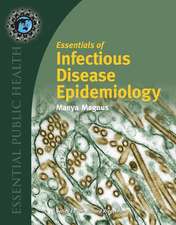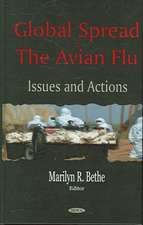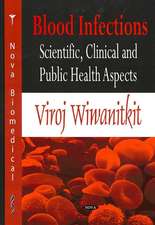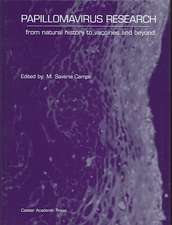Beasts of the Earth: Animals, Humans, and Disease
Autor E. Fuller Torrey M.D., Robert H. Yolken M.D.en Limba Engleză Paperback – 29 sep 2014
Humans have lived in close proximity to other animals for thousands of years. Recent scientific studies have even shown that the presence of animals has a positive effect on our physical and mental health. People with pets typically have lower blood pressure, show fewer symptoms of depression, and tend to get more exercise.
But there is a darker side to the relationship between animals and humans. Animals are carriers of harmful infectious agents and the source of a myriad of human diseases. In recent years, the emergence of high-profile illnesses such as AIDS, SARS, West Nile virus, and bird flu has drawn much public attention, but as E. Fuller Torrey and Robert H. Yolken reveal, the transfer of deadly microbes from animals to humans is neither a new nor an easily avoided problem.
Beginning with the domestication of farm animals nearly 10,000 years ago, Beasts of the Earth traces the ways that human-animal contact has evolved over time. Today, shared living quarters, overlapping ecosystems, and experimental surgical practices where organs or tissues are transplanted from non-humans into humans continue to open new avenues for the transmission of infectious agents. Other changes in human behavior like increased air travel, automated food processing, and threats of bioterrorism are increasing the contagion factor by transporting microbes further distances and to larger populations in virtually no time at all.
While the authors urge that a better understanding of past diseases may help us lessen the severity of some illnesses, they also warn that, given our increasingly crowded planet, it is not a question of if but when and how often animal-transmitted diseases will pose serious challenges to human health in the future.
But there is a darker side to the relationship between animals and humans. Animals are carriers of harmful infectious agents and the source of a myriad of human diseases. In recent years, the emergence of high-profile illnesses such as AIDS, SARS, West Nile virus, and bird flu has drawn much public attention, but as E. Fuller Torrey and Robert H. Yolken reveal, the transfer of deadly microbes from animals to humans is neither a new nor an easily avoided problem.
Beginning with the domestication of farm animals nearly 10,000 years ago, Beasts of the Earth traces the ways that human-animal contact has evolved over time. Today, shared living quarters, overlapping ecosystems, and experimental surgical practices where organs or tissues are transplanted from non-humans into humans continue to open new avenues for the transmission of infectious agents. Other changes in human behavior like increased air travel, automated food processing, and threats of bioterrorism are increasing the contagion factor by transporting microbes further distances and to larger populations in virtually no time at all.
While the authors urge that a better understanding of past diseases may help us lessen the severity of some illnesses, they also warn that, given our increasingly crowded planet, it is not a question of if but when and how often animal-transmitted diseases will pose serious challenges to human health in the future.
Preț: 271.79 lei
Preț vechi: 286.09 lei
-5% Nou
Puncte Express: 408
Preț estimativ în valută:
52.00€ • 54.59$ • 43.17£
52.00€ • 54.59$ • 43.17£
Carte tipărită la comandă
Livrare economică 11-25 aprilie
Preluare comenzi: 021 569.72.76
Specificații
ISBN-13: 9780813571430
ISBN-10: 081357143X
Pagini: 208
Dimensiuni: 152 x 229 x 15 mm
Greutate: 0.31 kg
Ediția:First Paperback Edition
Editura: Rutgers University Press
Colecția Rutgers University Press
ISBN-10: 081357143X
Pagini: 208
Dimensiuni: 152 x 229 x 15 mm
Greutate: 0.31 kg
Ediția:First Paperback Edition
Editura: Rutgers University Press
Colecția Rutgers University Press
Notă biografică
E. FULLER TORREY, M.D. is associate director for research at the Stanley Medical Research Institute in Bethesda, Maryland and a professor of psychiatry at the Uniformed Services University of the Health Sciences. He has authored or coauthored eighteen books, including The Invisible Plague: The Rise of Mental Illness from 1750 to the Present.
ROBERT H. YOLKEN, M.D. is the director of the Stanley Laboratory of Developmental Neurovirology and a professor of pediatrics at Johns Hopkins University Medical Center. A specialist in infectious diseases, he is the coeditor of the standard textbook, Manual of Clinical Microbiology.
Cuprins
Contents
Acknowledgments ix
Introduction xi
1 The Smallest Passengers on Noah’s Ark 1
2 Heirloom Infections: Microbes before the Advent of Humans 14
3 Humans as Hunters: Animal Origins of Bioterrorism 23
4 Humans as Farmers: Microbes Move into the Home 33
5 Humans as Villagers: Microbes in the Promised Land 48
6 Humans as Traders: Microbes Get Passports 56
7 Humans as Pet Keepers: Microbes Move into the Bedroom 68
8 Humans as Diners: Mad Cows and Sane Chickens 97
9 Microbes from the Modern Food Chain: Lessons from SARS, In?uenza, and Bird Flu 112
9 Microbes from the Modern Food Chain: Lessons from SARS, In?uenza, and Bird Flu 112
10 The Coming Plagues: Lessons from AIDS, West Nile Virus, and Lyme Disease 124
11 A Four-footed View of History 139
Notes 145
Glossary 171
Appendix 173
Index 175
Recenzii
“The authors’ highly informative and well-written book about the animal origins of human diseases will thrill and horrify readers, partly because its tone is so inflammatory and partly because its facts are so startling. Torrey and Yolken do an excellent job addressing the origins of specific diseases...and they offer interesting details about the manifestations of disease in various cultures throughout the world history.”
"This book brings a very important subject to our attention-the never-ending emergence of new human diseases . . . in every instance defying our predictions, in every instance reminding us of the complexity of our world, in every instance challenging our capacity to prevent and control the threat. . . . The public and its public health experts have a lot to learn here, but Fuller Torrey and Robert Yolken have provided us with a grand primer. If 'the devil is in the details' then at least we can now see some of the manifestations of this devil, and perhaps how we must deal with him."
"This book is a wonderful combination of very readable scientific and historical underpinnings of past and present epidemics of the spread of diseases from animals to people. This is combined with charming literary glimpses of how these disasters were portrayed at the time."
"A super book . . . this important book provides a novel perspective on the current and future status of human disease. Highly recommended."
Descriere
Beginning with the domestication of farm animals nearly 10,000 years ago, Beasts of the Earth traces the ways that human-animal contact has evolved over time. Today, shared living quarters, overlapping ecosystems, and experimental surgical practices where organs or tissues are transplanted from non-humans into humans continue to open new avenues for the transmission of infectious agents. Other changes in human behavior like increased air travel, automated food processing, and threats of bioterrorism are increasing the contagion factor by transporting microbes further distances and to larger populations in virtually no time at all.












